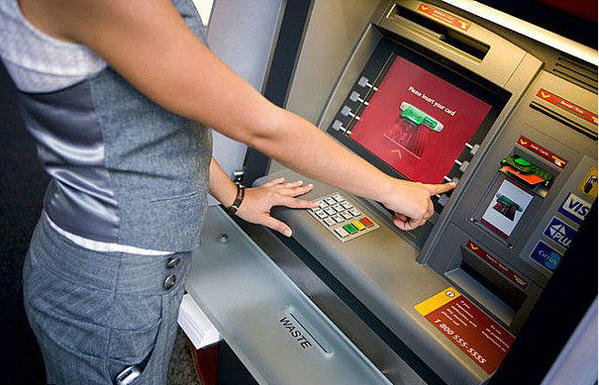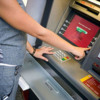The company has recently introduced ‘Upfront fares’ after suspending ‘Surge pricing’. Previously the app used to show the surge multiplier(something like 1.6x, 2.2x which means the customer has to pay 1.6 times of the actual charge) for a trip the customer is about to book which in turn varies according to the demand of the taxis in that locality. This has led to the cause of many distressful customers to give up using the app immediately they see the surge sign.
By introducing ‘Upfront fares’ the company has helped the customers to get an idea how much they have to pay at the end of the trip even before the confirmation of the booking. However there is no compromise in raising the fare when there is high demand like that in ‘Surge Pricing’. But the customers are not let to know the ‘surge multiplier’. So if the customer is looking to book a cab for a trip which he usually commutes and pays Rs.200, and the app shows him a upfront charge of Rs.400 he would be aware that there is a ‘surge pricing’ and could take a call whether to go for it or not. But, what would be the case of a customer who is looking for to book a cab in an unfamiliar location or new city itself. Here is a two step process to know whether there is surge pricing or not over the ‘upfront fares’ shown in the app. All that the person has to do is
- Open Google maps and enter your destination.
- Tap on the right-most option, for hailing a taxi.
According to the location the person is in, Google would give him a list of taxi options along with the approximate fare estimate and it provides the surge multiplier for each taxi too. Recent tests have shown that the fare estimate given by Google was pretty much close to the actual fare cost for the customer has paid at the end of the trip. Also the ‘surge multiplier’ given by Google is almost same as that in the receipt given by the driver at the end of the trip. For instance the Google has shown a ‘surge multiplier’ of 1.5x whereas the receipt had a surge pricing of 1.4x.
There is no need of one to find the uncertainty in the above method, as it can be used just to find out whether the fare is reasonable or not, when the person is in a very unfamiliar location. However it is high time for the company, Uber has to realize that hiding the surge factor is unethical and against consumer and strive to become more transparent and genuine about the pricing in near future.
In spite of this fact the company claims that it has pitched ‘upfront pricing’ only to add transparency to its service by letting its customers to know how much they have to pay at the end of the trip even before they have confirmed it. But this change in app has become as a cause for the customers to accuse the company for pocketing extra money by which the customers as well as the drivers are being affected.
Since the company has introduced this ‘upfront pricing’, there are many complaints being raised by the drivers against their payments. The drivers claim that they are under paid for each trip whereas the customers are being over charged. By usual norms 25% of the total money paid by the customers goes into the company’s pocket as commission and the rest are the earnings of the driver.
Reports say that there are too many changes in the policies of the company which are unfavorable for the drivers as well. For instance, a driver complains that he has been paid only Rs.100 for the trip for which the customer has been charged Rs.300. Many similar cases are been found raised by the drivers throughout the world.
The reason for this might be because of the less efficient application. Uber’s automated system that is being used to calculate the cost is said to wrongly estimate the distance and duration of the trip. It has been told that the system is also ignorant towards the traffic present in the route.
The biggest disadvantage with the ‘upfront pricing’ is here. Consider a customer enters the destination and the app takes up a route to calculate the cost of the trip and the customer confirms the booking. However during the trip due to traffic or any other concern if the driver takes up the shorter route, the cost remains unchanged for the customer even though he has travelled several miles lesser than the actual route used to calculate the cost by the app. Neither the driver is paid more, as his payment is made based on the distance he has travelled along with the base fare. Here comes the question where the extra money paid by the customer goes. The Company simply pockets the extra money which totally unethical and unprofessional way of doing business. All these facts are never brought into the customer’s knowledge as the driver himself will get his own receipt only after several days after the trip.
When the company has been questioned on the same they put forth the fact that they are transparent by letting their customers know the charges of each trip upfront and they also add that the customer agrees for the fares and hence they confirm their booking. They also claim that there is no much difference in between the payment made for the drivers and the amount charged for the customers. However they are not able to add any specific numbers or percentage of the difference. Being a reputed company, the customers as well as the drivers feel that it would be great and add value to the trust they have for the company, if it is ready to sort out the issue at the earliest.
Author Bio :-
Anand Rajendran is the CEO and Co-Founder of Gacie, one of the best mobile app development firms in Chennai. He is also associated with digital marketing industry who offers internet marketing solutions to various business firms. Rideyo, a mobile app that is built with Uber clone script enables taxi owners to manage their business easily from anywhere.


